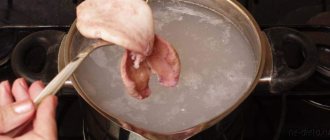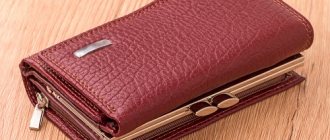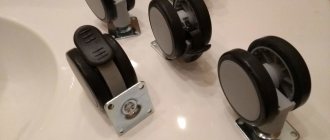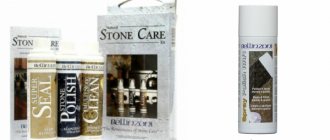Leveling under pressure
The simplest method is to use a press. It consists in the fact that the paper straightens naturally under weight. You can use thick books or any other weighty objects that are suitable in size as a press.
You need to do the following:
- Moisten the crumpled paper sheet with water. It is best to use distilled one, which does not contain any substances that could negatively affect the quality of the paper. To evenly irrigate the leaf with water, use a convenient sprayer. It should be kept approximately 30-40 centimeters away from the paper.
- Alternatively, wet a soft terry towel with water, wring it thoroughly and straighten it, and then place it on top of the paper.
- Regardless of which soaking method was chosen, you must act extremely carefully so that the paint or ink on the paper sheet does not dissolve.
- Now the wetted sheet must be smoothed with your hands and placed between felt scraps, fabric or paper napkins or other materials that can absorb moisture.
- After this, you need to place a heavy press on top of the paper sheet. The minimum holding time is twelve hours. During this entire period, you need to check the condition of the paper. As moisture increases, it is necessary to change the absorbent material. It will take two to four days for the crumpled paper sheet to dry completely, depending on the degree of moisture.
See also
TOP 10 ways to remove dents from furniture on linoleum at home
How to Shine Stainless Steel
There have always been problems with stainless steel. She very quickly loses her shine and attractiveness. But instead of using all those expensive stainless steel cleaners, rub a small piece of wax paper over the steel surface and the shine will return.
A WHO expert explained how the coronavirus could have entered the market in Wuhan
Robot looking for a home: Karen dressed her boyfriend in a toy costume during a trip
Scientists have discovered that the Venus flytrap can create a magnetic field around itself
Ironing
No less popular is the use of an iron. Dry and wet smoothing methods are used to improve the condition of wrinkled paper.
Dry
When choosing this method you need:
- Place the crumpled paper on the ironing board and straighten it with your hands.
- Cover the top with a thick piece of fabric.
- Turn on the iron, setting its temperature to the minimum level. It should not be heated too much, as the paper sheet will become brittle or yellowed as a result of overdrying.
- Stroke the sheet through the fabric several times, and after a minute check what condition it is in. If creases and bruises remain, repeat the steps, slightly increasing the temperature of the iron. You need to iron on the clean side of the paper, where there are no inscriptions or images.
For sheets of paper with ink or watercolors applied, only dry ironing can be used.
Wet
If the creases in the paper are very pronounced, and the sheet itself is very hot, it is recommended to use the wet ironing method:
- Sprinkle a paper sheet placed on the ironing board with distilled or filtered water from a spray bottle.
- Cover with a slightly damp towel or cloth.
- Set the iron temperature to the minimum level and increase gradually.
- Make several smoothing movements with the iron.
How to iron safely
Smoothing out crumpled paper with an iron is one of the most common and, at the same time, most risky methods. Therefore, precautions must be taken:
- Make sure that the iron is in working order, as well as that its power matches the electrical outlet used.
- Initially set the minimum temperature so that the sheet does not dry out and the paint does not melt.
- The increase in iron temperature should be smooth and gradual. You can't take it to the maximum level.
Amazing dust-repellent property of paper
In places where dust accumulates—usually your kitchen cabinets, window sills, or dressers—place some wax paper. Then replace the sheet every few weeks or months as it will become dirty. You'll never have to use a rag again.
Maslenitsa in Rus', Ostara among the Celts: interesting things for the spring equinox – 2021
A shell was found that ancient people played on 18,000 years ago
Hello from the 1960s and 1970s: looks from the past that you can wear this summer
If the paper is wet
Wet paper sheets take on an untidy appearance due to fading, as well as the formation of waves and bends. In addition, mold is likely to develop if prompt drying and restoration measures are not taken.
See also
How to choose the right size toilet lid, criteria for purchasing a seat
In such situations, you need to act immediately:
- Sort through soaked sheets of paper.
- Place them on a flat surface in a well-ventilated area.
- To dry naturally, open the windows.
- If you need to speed up the drying process, turn on the fan.
- Place blotting pads, napkins, pieces of felt or other materials with absorbent properties on the bottom and top of each sheet. As they become moist, replace them with new and dry ones.
- Keep indoors until completely dry.
For wet photographs and laminated sheets that are stuck together, there is another drying method:
- Place in a container with distilled or filtered water.
- Carefully separate from each other.
- Place a dry towel on a flat surface in a room with good air circulation. Place photographs and paper on it, face up.
- Leave until completely dry.
How to save a wet book?
Author: Anna Gooding-Coll
Greetings, sufferers! Welcome to everyone in wet crosswalks and flooded homes, everyone who has not insured their book collection against flooding. I sincerely hope that you Googled this question in a panic because your book is very, very wet. I will tell you in detail how to save a wet book so that after drying it does not become fragile, moldy or warped.
1. Shake it well
Dry the book as much as possible! Fast! Line the pages with something absorbent and press down. Gently shake the book to remove water. Pat the cover dry with a towel. Do everything carefully, thoroughly and quickly. If your book has glossy paper and photographic material, line it with wax paper before you do anything.
2. Put it in the freezer
This is the best thing you can do in the event of an emergency book getting wet. Even the Library of Congress recommends it! A wet book begins to mold almost immediately. There is nothing that mold likes more than wet books - not ice cream, not puppies, not beautiful true pure love on the warm sands of Cape Verde. Conversely, mold hates nothing more than severe frost. Freezing your book will stop the growth of mold before it spreads its tentacles. Try to make sure that the pages do not freeze to each other.
This won't necessarily stop the book from warping, but it may help reduce it because freezing slows down the absorption of moisture. By the way, this is a technical term. At our library technical school we had a whole course on absorption.
Also, beware of freezing ice. To some extent, you cannot avoid this, because you are an ordinary person and you have an ordinary freezer. Ice can damage your book the same way it can damage your body: When water freezes, it expands and breaks everything. Set your freezer to the lowest setting and check it often. If you have a "no frost" function, use it. Also, be sure to place the book in a sealed plastic bag to protect it.
3. Collect moisture
During the defrosting process, water will leak out of the book. Get ready for this! You don't want it to flow back into your precious paper friend. Place paper towels between the pages to absorb water while the book defrosts. Then place it on a towel or paper towels. It doesn't matter what absorbent material the book is on, as long as you change it as it gets wet. Monitor the situation carefully and change towels promptly.
You can sprinkle cornstarch on the remaining wet pages. It will absorb a lot of water and then you can simply shake it out or clean it.
4. Air drying
In the end, despite all your love and care, it is the power of physics that will save your book from the watery depths. Water tends to turn into gas even when frozen, and if you give it any chance, it will leave the tangible world and go to the heights of heaven. Do you feel like she's heartlessly leaving you? Don't be offended. Whether we like it or not, we all want freedom for water.
Turn on the fan and gently blow it on the wet book, without directing the air stream directly at it. The air should circulate so that the pages do not turn over. Do this until the book is almost completely dry, periodically changing paper towels as described above. If you thought this time could be spent listening to a couple of audiobooks, you're right.
5. Level it up
It's time to return this book to its original form! By this point the book should be just barely damp. Line the pages with clean paper towels and remove the absorbent surface on which the book rests. For this step you need to place the book on a hard surface. Add a paper towel if you think the book might still need it. You may ask, why do we need so many towels? I'll answer, it's simple: we're going to put the book under the press.
If the book is in very bad shape - warped, twisted, wavy, etc. – carefully give it the desired shape. Remember that it should still be slightly damp at this stage. If it's dry, congratulations, your book remains deformed forever. Perhaps you like it. I don't know, I'm not you. Don't get it wet again, you'll only make the problem worse.
Then lay your paper friend on a flat surface. Take a stack of other books (not wet ones). You need to put a big weight on your spoiled tome to get it nice and even. Turn the fan back on to continue drying.
6. Celebrate the victory
You did it! You saved the book! Or maybe not. Honestly, the result may vary, because not every wet book can be saved. Especially if the liquid spilled on its virgin pages is dirty, not water or does not freeze. Either way, you did your best. In book heaven, the textual martyr will appreciate all your efforts. And you continue to live.
A joint project of the Lingvopand Club and the editorial office of LL
Solving the problem urgently and quickly
If crumpled paper needs to be smoothed out quickly, you can use the following recommendations:
Roll the sheet on the edge of the table .
This measure will help cope with rough folds. This method is more suitable for paper that has been rolled into a roll. To straighten the sheet, you need to take it by the opposite edges, and then pull it up and down several times. It is necessary to control the pressing force so as not to tear the canvas.- Pass through the photocopier . He will compress the document like a press, and the creases will go away. The photocopier must be large, that is, professional. Such devices can be found in offices and copy centers.
A device for home use will not be able to cope with the problem and will most likely damage the paper even more.










